
A member of the RCIA class has Catholic relatives in Germany, and he asked why American Catholics have so few customs and traditions. “In Germany on All Souls Day everyone in the village goes to church and then to the graveyard to lay flowers and remember the dead and say prayers. This is beautiful. Why don’t we do this here?”
I tried to explain how American Catholicism is a jumble of all the different Catholic ethnic traditions, and how the Catholics from the different cultures used to live in their own communities and practice all these old traditions and customs, but that now with mobility and loss of faith the third and fourth generations are no longer so strongly identified with their Irish or German or Polish or Italian customs. They’ve become Americanized, homogenized, barbieandkenized.
As we approach Thanksgiving, I’m thankful to be back in my native America, but I feel some nostalgia for England and Europe. Even now, when Europe is so secular and Christianity seems like a lost cause they have Christianity in their bloodstream the way Americans–even American Catholics do not. For example, people still have an inkling of what Lent is and even what Advent is. Old Catholic customs and traditions and buildings live on in the landscape, in the calendars and in the language of the tribe. The architecture of belief is in place even if the belief has long gone.
In the United States, on the other hand, we live in a very religious and in many ways, a very Christian country. People go to church. People believe in God. People have a basic belief in the Christian truths and moral principles. But it hasn’t permeated the culture. We don’t have Christianity in the bloodstream in the same way. In America religion is a wide open marketplace where the individual and the latest fad is everything and tradition and customs are suspect. American religions is wide and shallow. I fear it does not run deep.
So instead of the rich pattern of fasts and feasts throughout the year, we have an event each month engineered by the retailers and greeting card publishers. September: Back to School; October: Halloween; November: Thanksgiving; December: Christmas; January: New Year; February: Valentines Day; March: St Patrick’s Day; April: Easter: May: Mothers Day; June: Father’s Day; July: Beach; August: Cook Outs. We observe the feasts by seeing the new set of cardboard posters at Wal-Mart.
Perhaps I exaggerate, but it seems that there are no real traditions to bind us together apart from Thanksgiving and Christmas. We live in a shallow society where shopping and screen based entertainment is everything. We’ve all become plastic little Barbies and Kens, and should we turn to the past in an attempt to revive some of the old customs and traditions it might work, but there would be an artificiality about it.
Advent is coming, and with it, the consideration of the four last things and the end times.
So I feel a sense of loss for a Catholicism I have never known– a sense of all that our modern age has forfeited–and for what? Transportation and comfort and technology–moving around faster than before and communicating with each other faster than ever before, and doing all this in an easy chair.
In other words, we’ve thrown out practically everything that was beautiful, true and good in order to be in more of a hurry to sit down.
Alas.

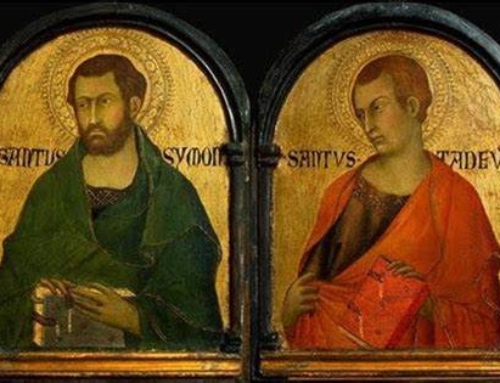
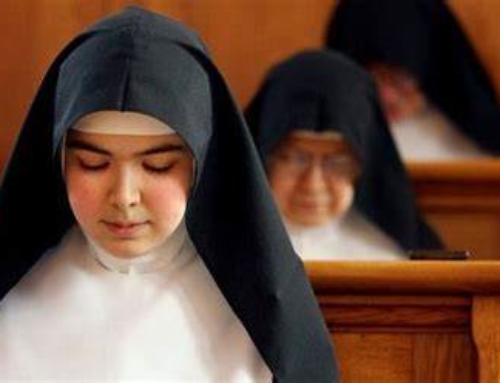
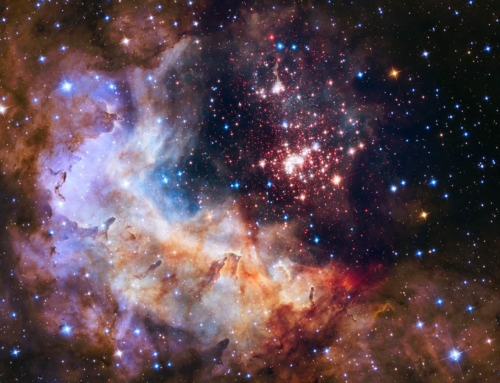
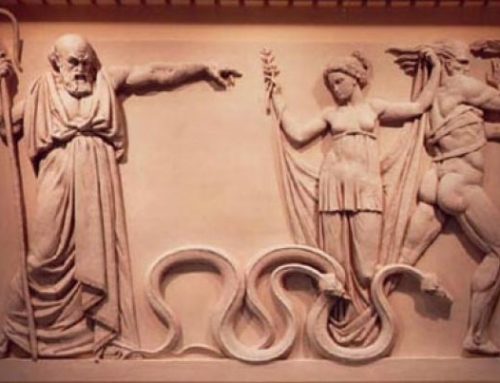
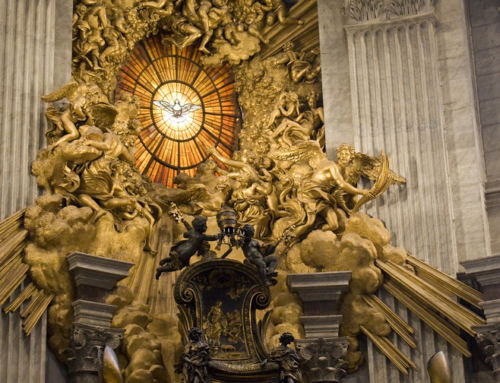
BUT strongly Catholic areas still have this – in St. Louis, there are German customs, like celebrating the feast of St. Nicholas filling stockings for the children; in Texas, the Feast of Our Lady of Guadalupe and Posadas are celebrated.
Hi Father, I’m one of those very lucky Catholics who lives in a place still strongly holding onto its Spanish-Catholic culture and identity. In Northern New Mexico,we have pilgrimages for Easter, processions and novenas in honor of Our Lady, Las Posadas, the tradition of the holy family going from door to door looking for a place for Mary to give birth, will be starting. It’s always followed by a gathering afterward.
Father, am I reading this correctly: the countries with strong traditions no longer have Christ in their lives?
I’m saying its mixed. In some parts of Europe they still have the faith and strong traditions, but even where they don’t have the faith there is a residual deep element of Christian culture because it has been woven through the culture for so long.
This comment has been removed by the author.
Father,While the “Barbie and Ken Culture” can been seen throughout the U.S., there is a growing wellspring to the return of tradition and not simply nostalgia.People ( all ages – and most encouraging younger men and women) are recognizing the longing, the need , the pull for a deeper, “richer” experience especially as it concerns their Catholic faith.I find evidence in the resurgence of the TLM and Orthodoxy of new seminarians as written by Fr.Z and his blog WDTPRS.The foundation is being resurfaced and rebuilt as Fr.Z states “brick by brick.”Take heart.
I’m not one of those people that blames the Spirit of Vatican 2 for everything wrong in the Church but after the council there was a pretty strong effort to get rid of the incidentals ie the May processions and such. Personally, I think that in terms of experiencing the universality of the church, this was as great a loss as the use of Latin. Several years ago I was in a Legion of Mary at the local cathedral. The people there were from all over the world and yet when we spoke of our childhood, we all had the same childhood. The foods and songs might be different but they were thematically the same. Thats something that most Americans raised after the council have never experienced.I think that a part of it was that Catholics wanted to be Americanized and so it was necessary to get rid of anything that smacked of superstition which even included the public praying of the rosary, stations of the cross, First Fridays I’m not sure whether Christianity in America is wide and shallow or not. It may simply be that Christianity in Europe is rooted in Catholicism and in America it is rooted in Protestantism.I think that there is a whole chasm between the two approaches that we sometimes overlook simply because American Catholicism has in many ways become culturally Protestant. I agree that it is a shame.
A very good post, Father!When I reflect on what I loved most about holidays when I was growing up, I find it centered on my own family’s traditions and the things we did together. So there’s hope that even if you’re just one family you can make a day special (though having a whole community sure helps).
I stopped watching television because of the Ken and Barbie culture. Nothing worse than an advertisement telling me how I should see myself other than the way I am. If your a woman and you want to improve your self-esteem, throw a rock through your television and burn your Cosmopolitan. Jeez, who wants to live in a world of sexy, wealthy, powerful, cardboard people.Don't know what I'm talking about read:"Amusing Ourselves to Death" by Neil Postman"Ways of Seeing" by John Berger"Sign Wars" by Goldman & Papson"The Unreality Industry" by Mitroff & Bennisand anything by Jean Kilbourne.
If you all don’t like to read, Jean Kilbourne has a 6 minute intro to one of her educational videos. Mind you the video is meant for schools and colleges hence the $300 dollar price tag; the books are much cheaper.
Nice comment, Father. You’re one of the ones who makes fun of the pre-Vatican II Catholics, who had such customs, among which were visiting graves on All Souls Day, among others.
Father, I look at it this way. Each generation (biblically-40yrs) has to choose for themselves whether to be Christian or not. If their traditions are strong then even though one generation may reject Christianity the next one may not. Look at Eastern Europe and Russia. After all those years of Communism Christianity is coming back. Why? because their Tradition never died. Can we say the same about the depth of our Christianity?
Somebody’s been reading the alternate universe version of this blog, ’cause in this universe, Father hasn’t made fun of pre-Vatican II Catholics.(St. Philip Neri, on the other hand, is terrible about that. Somebody should stop him.)The thing is, there was probably a lot of artificiality in stuff like May crowning. I mean, sure it was the custom in some of the countries people came from and some of the orders that taught people. But at a certain point, it became universal and obligatory at parochial schools, it seems. What was up with that?Shrug. You can chase your tail pretty hard on stuff like that. If you’ve done it twice, and if you have little kids who can’t remember you not doing it, it’s a tradition.
Oh, and December 6 is when you get your stocking filled, of course!
This is a fantastic post, Father. It would make a great book, if fleshed out. Get Maureen to co-author it, because she makes spot-on points, too.
Not to be outdone by television entertainment, the toy companies are trying their hand at it as well. Case in point: Barbie’s ex, Ken, madeover now as he tries to win back Barbie’s heart. It seems the toy companies haven’t got it quite right though, as DrJoolz rightly points out, the new wave of makeovers are designed for personal satisfaction with self, rather than for the sole purpose of winning love and affection from another.—————Gillberk INFLUENCER
I think one can romanticize traditional Catholic culture too much in some cases. I grew up with posadas, family altars, rosaries, and other things, but I don’t believe it to be enough to hold back the tide of modernity, at least not by itself. In many ways, especially for immigrants, the old ways are something to be nostalgic about, but it is not something that you want to necessarily return to. It sort of just becomes what we did in the “old country” that we all know will die out in the next generation or two, since we are all Americans now. A lot of those things were born in a very insular world and the exposure to a pluralistic culture often makes them unviable and even a bit ridiculous, as someone pointed out regarding the mandatory pre-Vatican II May Crowning. Outside of a context of a homogenous and often rural culture, certain things cease to make sense, become merely a matter of form, and then are disposed of altogether. It is the inevitable result of modernization, and who knows how the current mini traditional renewal of the Church will thus pan out.